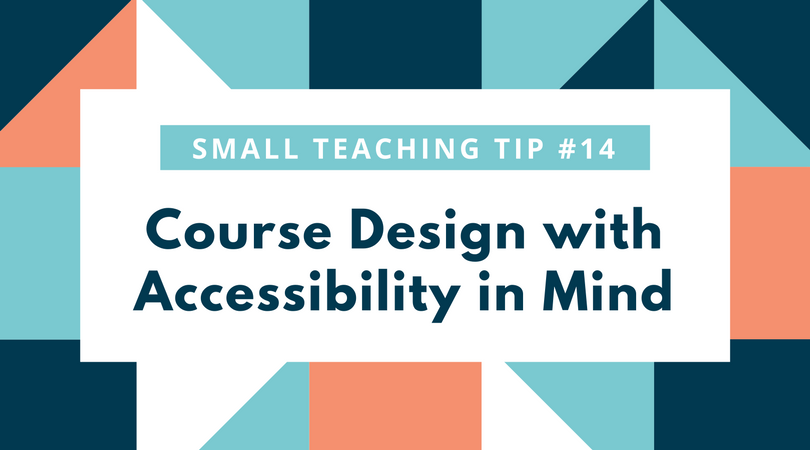A couple years ago, I had a startling wake-up call as an instructor. While wandering the aisles at Target, I received an email from one of my students informing me that she is blind and may need accommodations in my class. I leaned against my cart and realized I had never before considered how accessible my course is. Most of my readings were scanned book chapters and articles that were not screen reader friendly. None of the images I used included alt text. Some of my charts and diagrams relied on color alone to convey information. And I relied a lot on video clips.
It was one week before the semester started. I was screwed.
Ultimately, however, the student and I worked together to make her experience in my class positive. I learned about optical character recognition (OCR) and how to make PDFs “readable” by software like JAWS. When grading, I recorded audio feedback rather than using Word’s track changes and discovered almost all my students preferred this method. And I provided typed descriptions of important visual elements in the videos I showed in class. While I was able to ensure this student had access to everything the rest of her classmates did, it was a lot of work and a lot of last-minute scrambling.
Thus, I want to encourage you to not make the same mistake. Now is the time to think about accessibility, not when you receive an accommodation letter from a student. Yes, it will add preparation time up front, but it is much more efficient to be proactive than reactive.
What can you do as an instructor to ensure all students have equal access to your course materials and learning environment? Here are a few ways to get started:
- Information must be presented to students in ways they have the ability to comprehend (it can’t be invisible to all of their senses). For example:
- Provide text alternatives for non-text content (such as full-text transcriptions).
- Include appropriate alternative text (alt text) that provides an equivalent to image content.
- Provide captions and/or alternatives for audio and video content.
- Try YouTube’s automatic captioning, which is relatively accurate and not difficult to edit.
- Make content available to assistive technologies, such as screen reading software.
- Learn about optical character recognition and how to make your PDFs accessible.
- Use sufficient contrast to make things easier to see. For example, use dark background and light font or vice versa. A contrast checker can help determine if your materials adhere to Web Content Accessibility Guidelines. Also, do not rely on color alone to convey meaning.
- Make sure all users can navigate and interact with your learning environment. For example:
- Make all functionality keyboard accessible, rather than requiring a mouse or trackpad (e.g. keyboard shortcuts).
- Give users enough time to read and use content (e.g. additional time to take an exam).
- Do not use content that may cause seizures or sensory discomfort (e.g. rapidly flashing animations).
- Avoid hyperlinking phrases like “Click here,” “More information,” or “Continue.”
- Instead, the link itself should describe what it is linking to (such as OAKS tutorials rather than https://blogs.cofc.edu/tlttutorials/oaks-tools/).
- Ensure technology tools, websites, or other outside resources used in the class are accessible to all students.
- For example, if you will be using a textbook publisher website, it is your responsibility to confirm their website is Section 508 compliant.
These additional resources will further help you design your course with accessibility in mind:
- Center for Disability Services (College of Charleston)
- Accessible Syllabus (Tulane University)
- Inclusive Teaching (St. Louis University)
- Making Powerpoints Accessible (Microsoft)
- Creating Accessible Course Materials (Mesa Community College)
- ADA Compliance for Online Course Design (Educause)
- Inclusion by Design: Survey Your Syllabus and Course Design (James Madison University)
- A Welcoming Classroom (Chronicle Vitae)
This post is part of a series which presents low risk, high reward teaching ideas, inspired by James Lang’s book Small Teaching: Everyday Lessons from the Science of Learning.

